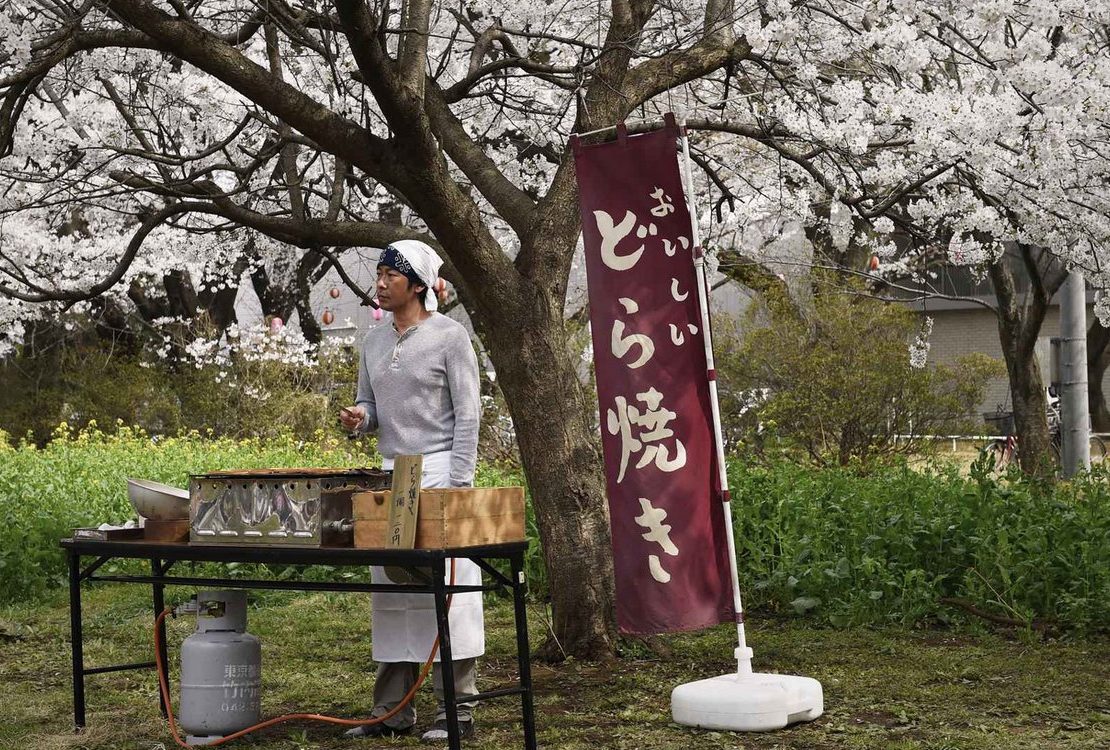Before Japan was widely recognized as a force in the film industry, and later added to the cannon of film studies, Western representation of the culture, limited it to mere exoticized entertainment. Thanks to these filmmakers who did not only help forge a national identity through the medium, but whose works also created conventions that continue to manifest through Japanese cinema’s expanding body of work. Trailblazers and light keepers in their own rights, here a few directors who have pushed and continue to push, the envelope for Japanese cinema beyond the stereotypical.
Teinosuke Kinugasa (1896-1982)
Kinugasa is a pioneer, to say the least. He was the first Japanese filmmaker to use a subjective first person point of view and the flashback as a story device in a film. Before becoming a director, Kinugasa was an oyama or a male actor who plays female roles. He specialized in jidai-geki (period films) like “The Gate of Hell” (1953) that won the Grand Prix in 1954 and was awarded Best Foreign Film the following year by the Academy.
Recommended viewing: A Page of Madness (1926), The Loyal 47 Ronin (1932), Two Stone Lanterns (1933)
Kenji Mizoguchi (1898-1956)
“One of the most furious and fiercely critical political filmmakers of all time”, is how The New Yorker’s Richard Brody described Mizoguchi whom he believes is one of the best Japanese filmmakers. While his peers focused on the mundane everyday life in the country, Mizoguchi delved into the films highlighting injustices and oppression, often through his depictions of period pieces. His female characters has also been said to be proto-feminists, playing a central role in most of his films against the backdrop of patriarchal structures.
Recommended viewing: The Story of the Last Chrysanthemums (1939), The 47 Ronin (1941-42), Utamaro and His Five Women (1946), Ugetsu (1953), Street of Shame (1956)
Yasujiro Ozu (1903-1963)
Donald Richie, one of the very first critics to chronicle the rise of Japanese cinema in the world stage, described Ozu as being hailed by his colleagues as “the most Japanese of all film directors” whose works greatly reflected Japanese family values and dissolution. Dubbed as a modernist and an avant-garde auteur, Ozu didn’t eventually achieve recognition for his masterpieces until his death in 1963. He is known for his technique called “pillow shots” which Roger Ebert describes as “shots of an exterior detail” usually of a scenery which help pace the rhythm of the film, as with poetry’s “pillow words”.
Recommended viewing: I was Born, But… (1932), Late Spring (1949), Tokyo Story (1953), The Flavor of Green Tea over Rice (1953), Equinox Flower (1958)
Akira Kurosawa (1910-1998)
Kurosawa’s period film, Rashomon (1950) winning the Grand Prix at the Venice Film festival in 1951 prompted a turnaround in the image of Japan to the Western eye, from mere object of exoticism to a distinct art form. Film scholars have widely associated Kurosawa as the pioneer to the introduction of Japanese cinema to the West, and ultimately to the rest of the world. Originally trained as a painter, Kurosawa has made more than thirty films throughout his lifetime with a number of which considered to be classics.
Recommended viewing: Seven Samurai (1954), Drunken Angel (1948), Ran (1985), Dreams (1990)
Keisuke Kinoshita (1912-1998)
Having decided at an early age to pursue film against the wishes of his parents, Kinoshita was said to be “the only Japanese director who was born to the cinematic art”. Kinoshita worked under the same studio which housed Ozu, known for shomin-geki or stories of everyday life–a genre which Ozu has perfected and which Kinoshita has continually reinvented throughout his career.
Recommended viewing: Carmen Comes Home (1951), A Japanese Tragedy (1953), Twenty-Four Eyes (1954), She Was Like a Wild Chrysanthemum (1955), The Ballad of Narayama (1958)
Nobuhiko Obayashi
Branding Obayashi’s filmography as “psychedelic” maybe an understatement to the variety of other pieces he has done over his careers: from full-length features to commercials. Nonetheless, Obayashi might as well be the leading director of horror-comedies in Japan with his 1977 cult masterpiece “House” which mesmerized western audiences with its out-of-this-world theatrics. At 79, Obayashi, shows no sign of slowing down, with more than 2000 commercial credits to date.
Recommended viewing: Bound for the Fields, the Mountains, and the Seacoast (1986), Exchange Students (1982), Emotion (1966), The Discarnates (1988), Sada (1998), The Little Girl Who Conquered Time (1983)
Takashi Miike
With more than a hundred cinematic credits to back his filmography, director Takashi Miike has been known for his disturbingly violent films, “Audition” (1999) and “Ichi the Killer” (2001) which would seat pretty well with its slasher film counterparts from the west. Miike has taken on almost every imaginable violation against what passes as “decent” with films depicting sexual perversion, incest, violence, to name a few. His productions however attract niche moviegoers and critics because of their far from reality quality which subverts the very genre that he is known for.
Recommended viewing: Dead or Alive (1999), Agitator (2001), The Happiness of the Katakuris (2001)
Sachi Hamano
Determined to change the stereotype played by women on screen, Hamano took to no less than making pink films–a genre so specific to Japanese cinema, distinguished for its artful portrayal of eroticism–to reinforce this disparity between male and female actors. But because of the discrimination pink filmmakers are subjected to, as inferior to mainstream directors, Hamano has often been overlooked being a female director in an industry that’s notoriously male-dominated. But apart from doing softcore porn, Hamano has also been venturing into making films, still, on a quest to equalize women’s place in the society ultimately through the silver screen.
Recommended viewing: Whore Hospital (1997), In Search of a Lost Writer: Wandering the World of the Seventh Sense (1998), Lily Festival (2001),
Hayao Miyazaki
Before a career marred with intrigues regarding false retirement, the name Hayao Miyazaki was only associated in Japan with animated movies. That was in the 90’s, “My Neighbor Totoro” wouldn’t be available for American audiences for another four years. Miyazaki’s success in the US is thanks to Disney Pixar’s efforts to bank on then emerging anime feature “Spirited Away” which outsold Titanic’s box office returns in Japan. Since then, Miyazaki’s Studio Ghilbi has made a name for itself in the world of animation with its simplistic plots which often are mistakenly associated with children’s entertainment but has deeper and more meaningful undertones.
Recommended viewing: Nausicaä of the Valley of the Wind (1984), Castle in the Sky (1986), Princess Mononoke (1997), Howl’s Moving Castle (2004), Ponyo (2008) and The Wind Rises (2013)
Naomi Kawase
Perhaps one of the most decorated Japanese director of the 21st century, Kawase, since her first feature in 1997 called “Suzaku” bagged the Camera d’Or at the Festival de Cannes—becoming the youngest filmmaker to ever take home the award—has been a Cannes fixture, eventually becoming the first Japanese juror alongside Steven Spielberg in 2013. The 48 year old director’s signature lies in her mastery in weaving her personal narratives with her pieces, like “Embracing” (1992), documentary about finding her father.
Recommended viewing: The Mourning Forest (2007), Katatsumori (1994) and Sweet Bean (2015), which is part of this year’s Eiga Sai lineup.
The 20th Eiga Sai runs from July 1 to August 29 at Shang Cineplex, CCP Complex, and the UP Film Institute. For screening schedules and updates, check Eiga Sai’s official Facebook page and website.
Writer: CHRISTIAN SAN JOSE




